The Spoken Spelling Series of Books and Audiobooks: About Each Book
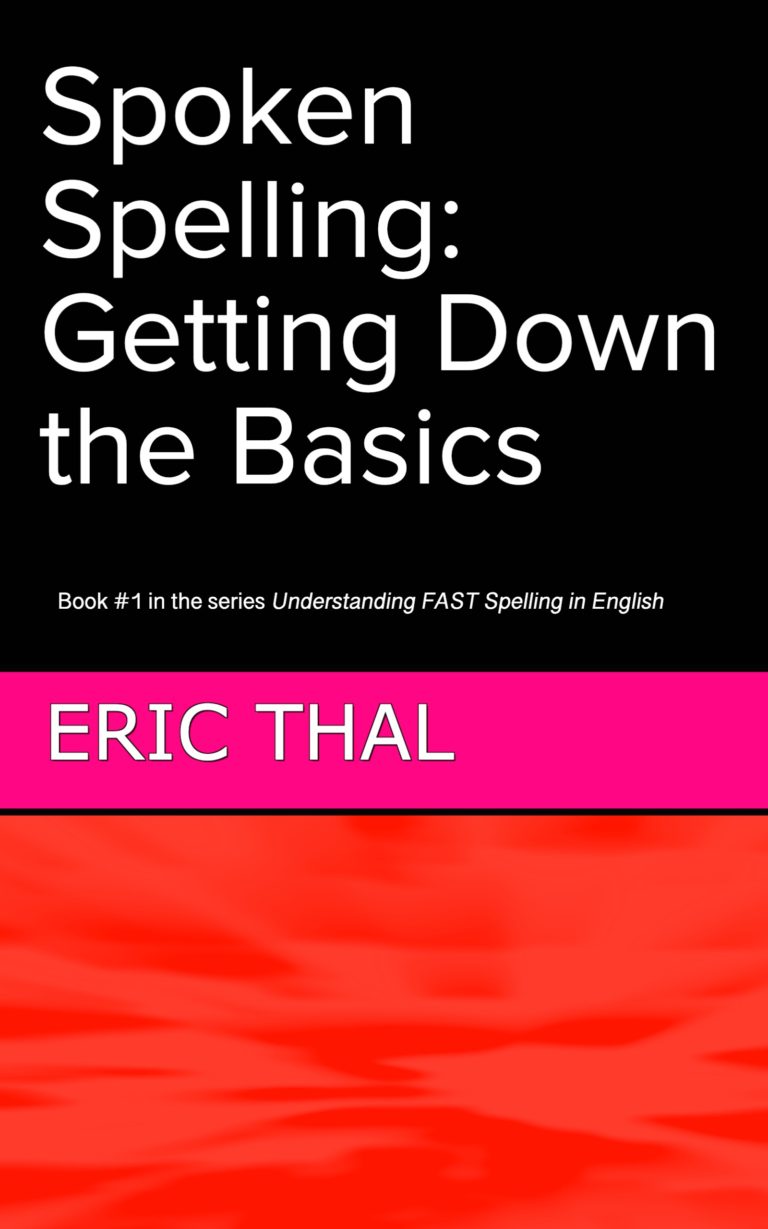
Spoken Spelling: Getting Down the Basics
Spoken Spelling: Getting Down the Basics is the first book in the series Understanding Fast Spelling in Spoken English. This audiobook introduces the sounds of the 26 letters and puts them into three different groups in a brand new way. The audiobook is largely lecture and explanation, with listen-and-repeat drills provided throughout. You’ll learn the names and sounds of the letters of English, the three groups that letters are divided into, and the different types of connection points that are created when pairs of letters are spoken.
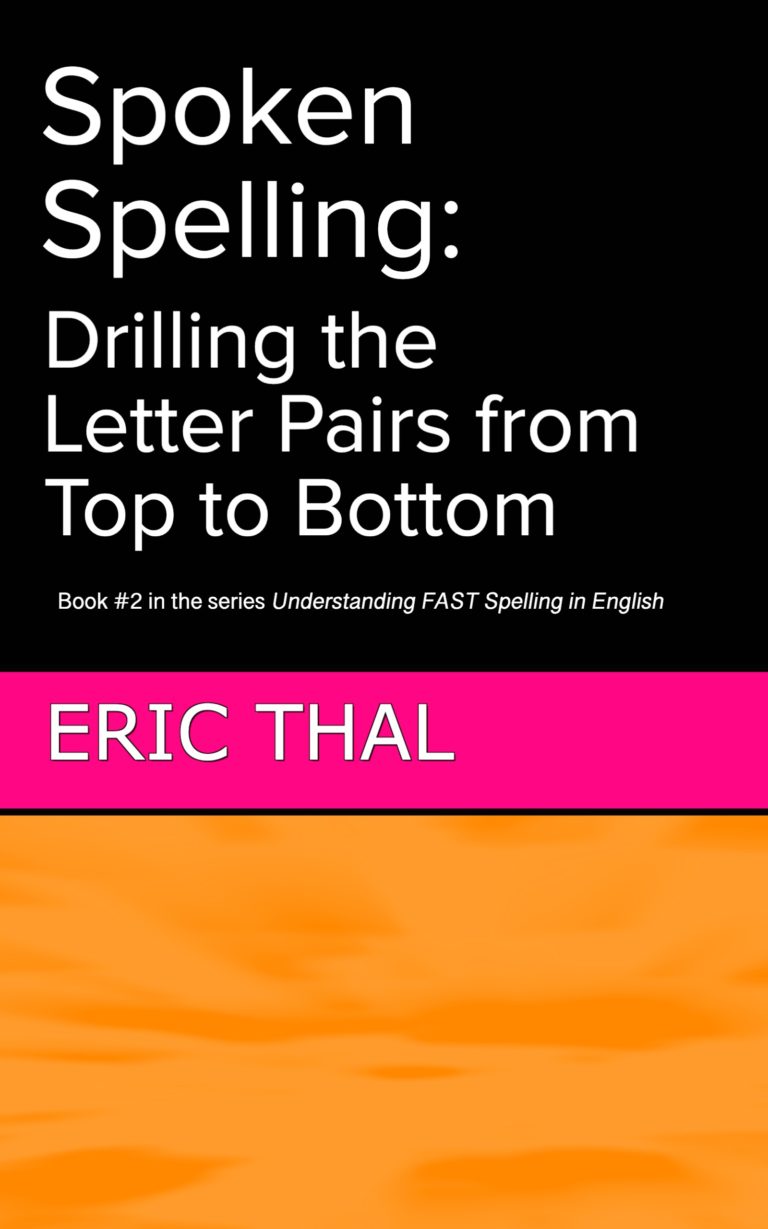
Spoken Spelling: Drilling the Letter Pairs from Top to Bottom
Drilling the Letter Pairs from Top to Bottom is the second book in the series. Here, we’re going to shift gears from Book 1 in order to get you out of your head and into your body. All of the books in the series contain drills, which must be spoken out loud. But, this audiobook has almost no lecture material. After one chapter with a short explanation, review, and instructions on how to use the drills, the rest of the course is made up entirely of sound, letter, and word drills.
The value of the course is in listening and repeating the sounds, letters, and words you hear out loud. If we were to compare this method to learning a musical instrument, the drills are the practice time or the time playing “on your instrument” – the instrument being your body, specifically your listening and your speaking.
The drills move quite quickly. Pace yourself, and get ready to start listening and repeating. By the way, if you’ve just come from book 1, welcome back! If you want, you can skip the chapter on letter groups and go right to the drilling in Chapter 3. Or, stick around if you think a quick review might be helpful. And, if you’re new to the course, welcome and thank you for joining us! Okay, let’s get right into this.
About the Series
The books and corresponding audiobooks is this series (Understanding Fast Spelling in Spoken English) cover the exact same material. Although it’s possible to work with the audio or even the text alone, most learners will find it useful to work with both the audio and text of any particular book, usually at the same time.
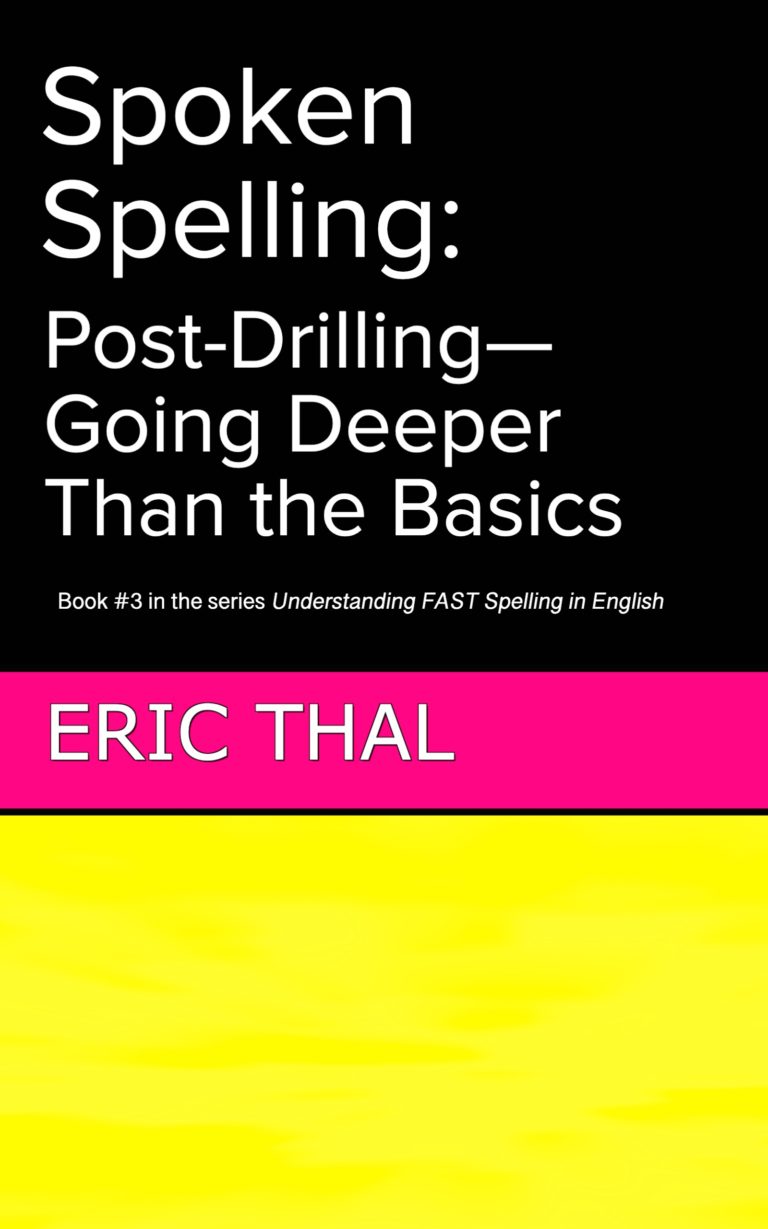
Spoken Spelling: Post-Drilling – Going Deeper than the Basics
Post-Drilling – Going Deeper than the Basics is the third book in the series Understanding Fast Spelling in English.
We will now move from the drills back into more lecture material. We’ll introduce new topics, such as intonation, and examine the different tones used for questions and for answers. We’ll also go into more detail on topics already introduced, such as glides. Since our goal is both to easily understand other speakers and to speak with clarity and naturalness ourselves, a detailed look at glides, linking, and clean connections is worthwhile. We’ll also compare different types of letter pairs to strengthen our ability to hear and say all letter combinations.
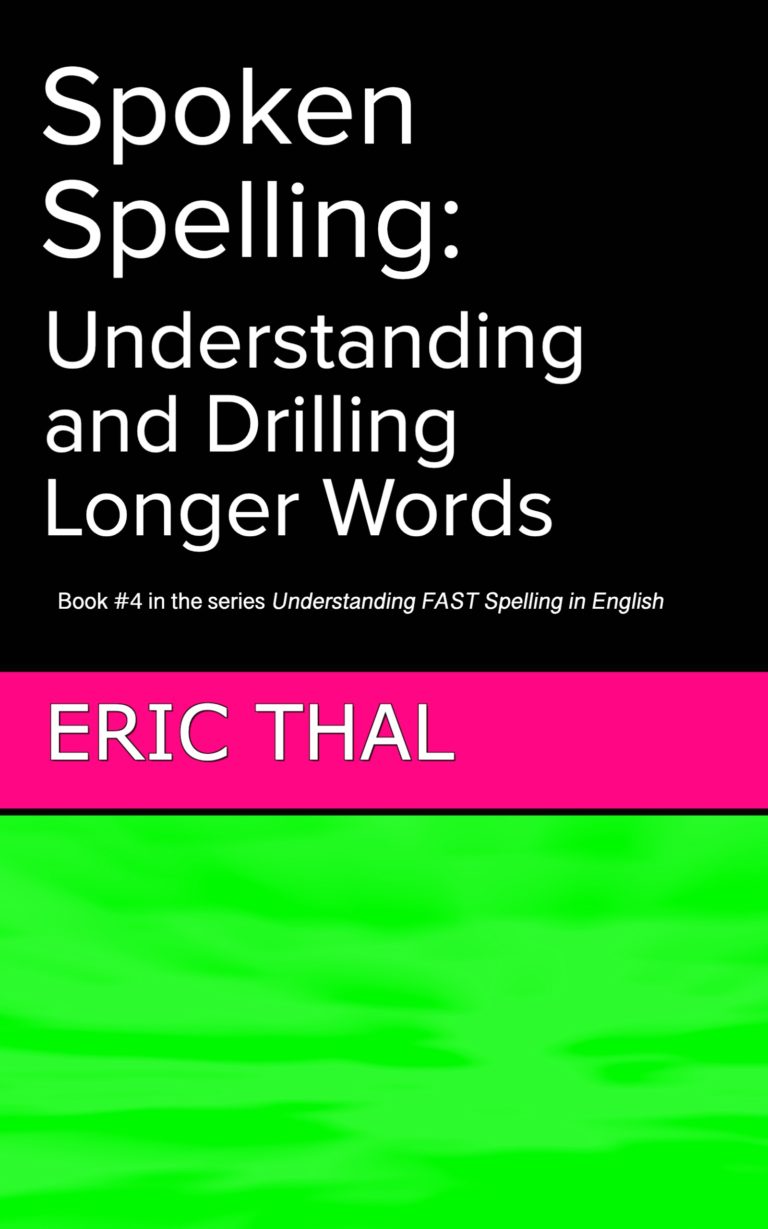
Spoken Spelling: Understanding and Drilling Longer Words
Understanding and Drilling Longer Words, book four in the series, focuses on the principles that must be understood in order to comfortably comprehend or speak longer words. These principles include breaking larger words into smaller groups of letters, or letter pairs, and being able to use breath control to comfortably say those letter groups. We’ll extensively drill repeated letter pairs in order to be able to say longer strings of letters on a single breath. We’ll also look at the precise ways certain letters can be greatly shortened and still efficiently understood by the listener. Whether we are listening or speaking, our goal is always an easy flow of communication that is relaxed, efficient, effective, pleasing, and natural.

Spoken Spelling: Advanced Concepts and In-Depth Review
Advanced Concepts and In-Depth Review, book five in the series, explores some more advanced concepts, as we’ll look at the idea of “thinking the letter” and letting go of technique. We’ll do some speed drills to continue to build up the number of letters that can be said in a single breath. In addition to name drills, there is a troubleshooting section, in which we’ll explore how to get help from a speaker in the event we can’t understand what they’re saying or spelling. This book ends with several chapters of drills, in which we’ll review letter pairs by themselves, and then the same letter pairs within names.
If some of the drills start to feel repetitive and that they are going on too long for you, remember that you don’t have to do every single one. If you feel like you’ve gotten enough out of any particular drill, it’s okay to skip ahead.
Also, up until this point, you may have been doing most of these exercises without looking at a text, just listening very closely and repeating. As we get to these longer and more complex words and names, it’s okay if you want to look at the text. And if you’re working without a textbook, or if you’d prefer not to look at the text, don’t be concerned if you don’t get every single one of these words right from the first time you hear them. Just enjoy the process, and know that if you can’t quite get something, it’s probably intentionally designed to be very challenging. You might listen back again, and before you know it, you’ll have it.
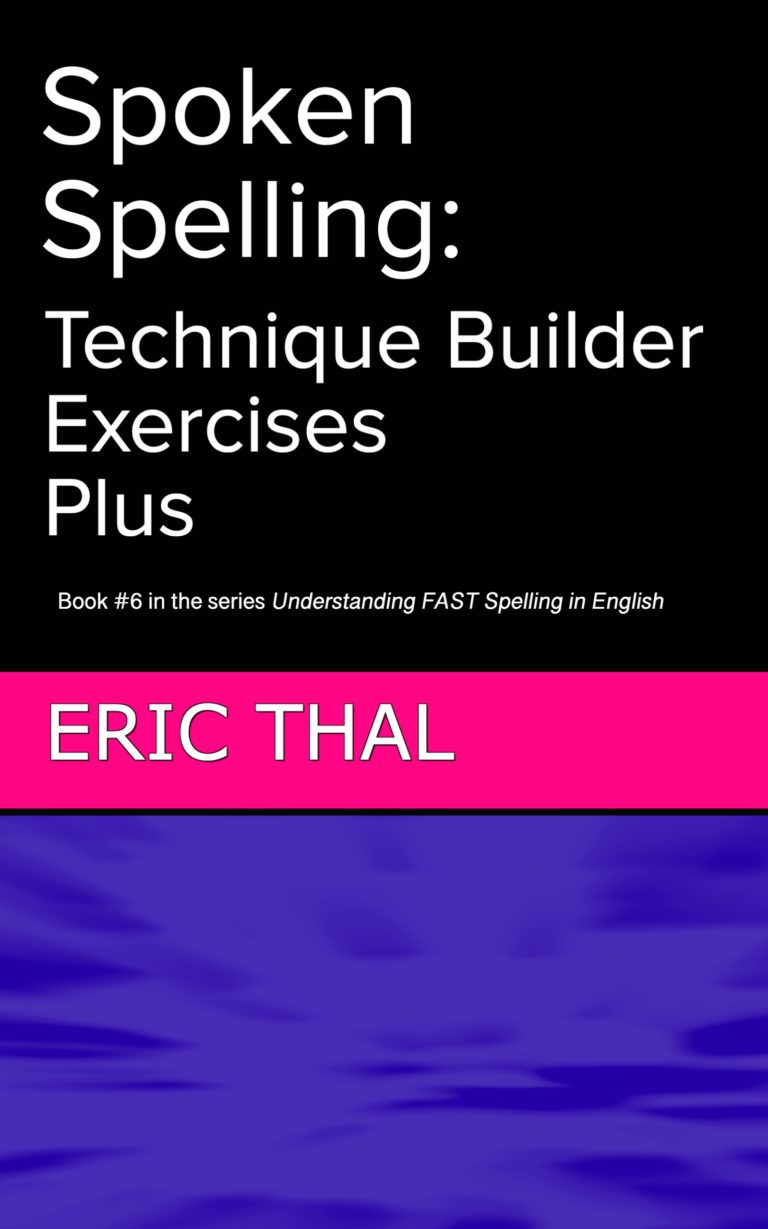
Spoken Spelling: Technique Builder Exercises Plus
Technique Builder Exercises Plus, book six in the series, is made up of a technique builder and bonus material. The technique builder is comprised of two contrasting parts: a slow and a fast approach. Part one reviews earlier material, taking a slower approach to basic intonation, and the pronunciation of glides and shortened blocks. Part two of the technique builder also reviews earlier material, but takes a faster approach, revisiting both pronunciation and intonation, with a focus on allowing technique to become fully integrated into the body.
If you’ve studied earlier books in this program and found some of the sections were difficult or moved too quickly, you may find some of the slow, methodical, and repetitive drills in part one very helpful. On the other hand, if you listen to part one of the technique builder and feel you would like exercises that move more quickly, feel free to jump ahead to part two.
The second half of book six is bonus material and includes elements that are less common, but do occur in spoken communication, including punctuation, the names of computer keys and symbols, and the APCO and NATO spelling alphabets. You’ll also have the chance to test your skills by taking a written test of confirmation codes.
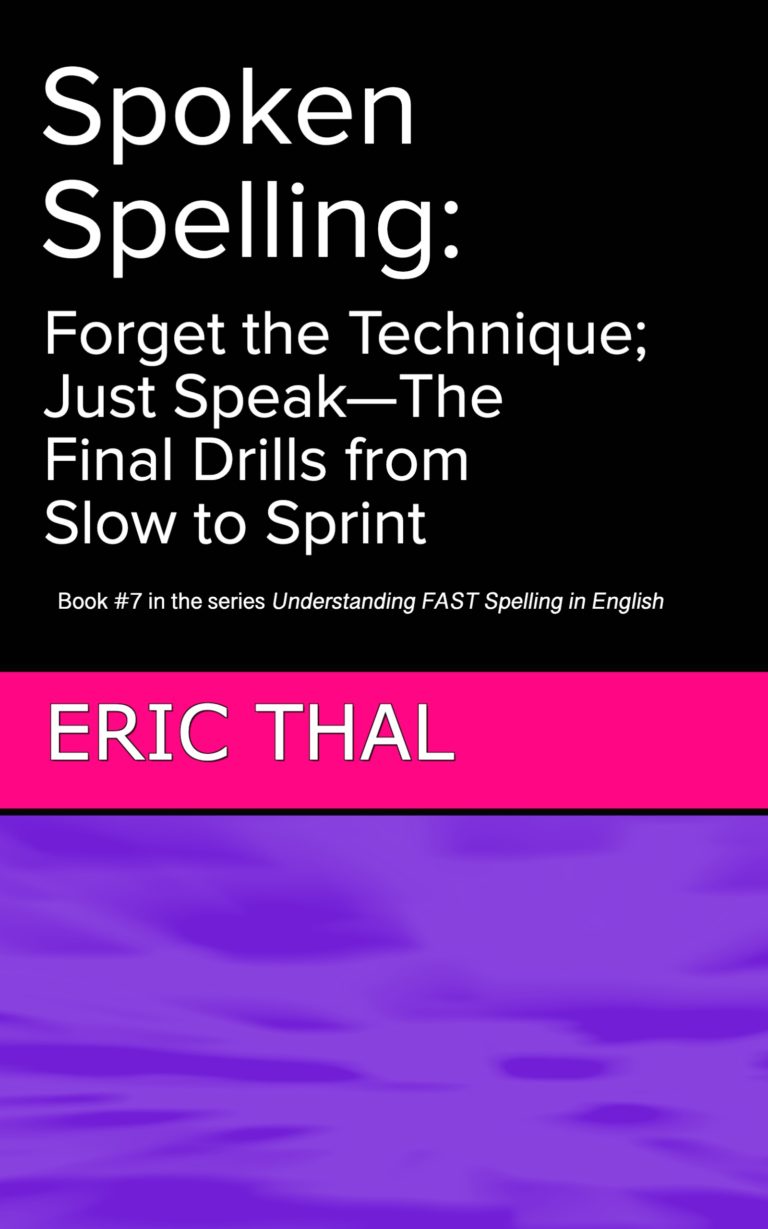
Spoken Spelling: Forget the Technique; Just Speak - The Final Drills from Slow to Sprint
Forget the Technique; Just Speak – The Final Drills from Slow to Sprint focuses purely on drilling. The drill starts with single letters and expands gradually into very long words. The exact same set of letters and words is repeated three times at increasing speeds – slow, very fast, and sprint.
In moving to the next level and fully incorporating this technique into our speaking, we want to, in a sense, “forget the technique” and just speak freely.
If you run into trouble in any areas with any particular sounds, you can always go back to the technique.
Relax, forget the rules, and focus on just listening and repeating. Trust your ear and trust your speech. Think into the center of each letter as your speech flows effortlessly from one letter to the next.